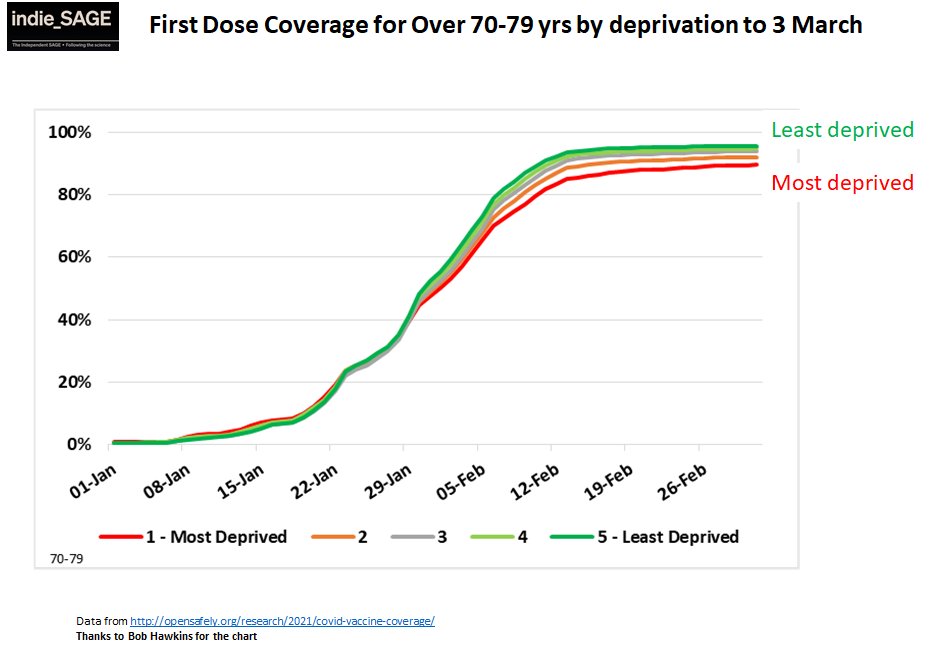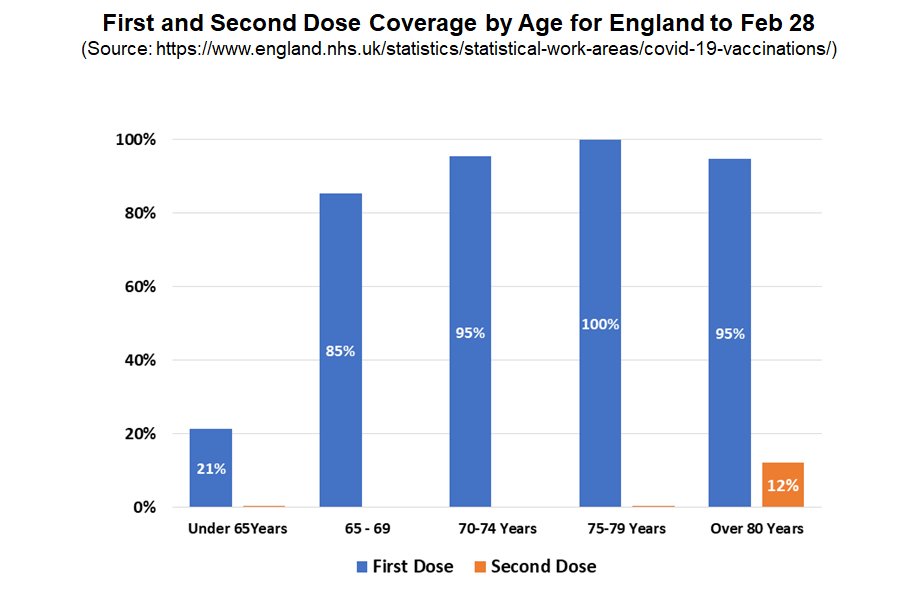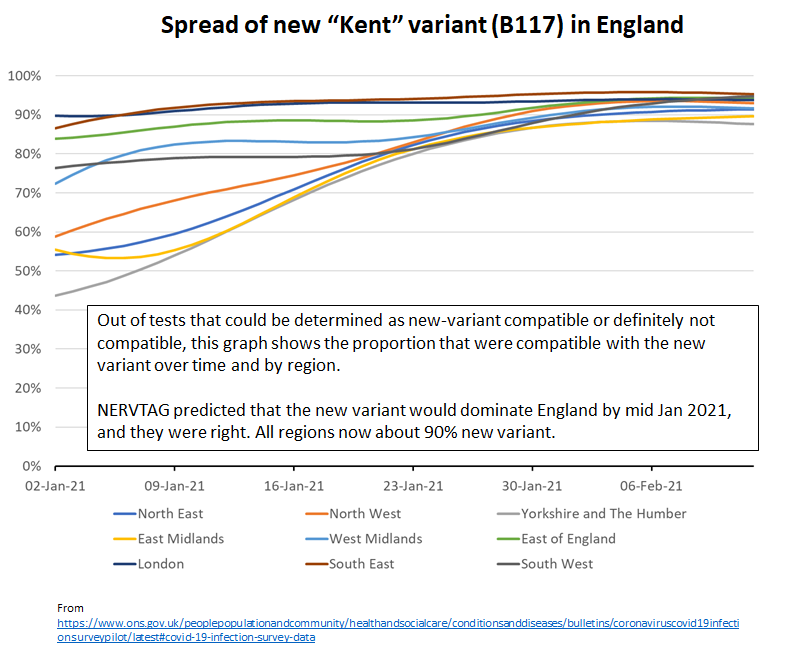
THREAD on VACCINATIONS: how are we doing in England?
Although this week has seen fewer jabs, we've still given a dose to 2.5 million people over last 7 days.
It's also good to see 2nd doses starting to take off & 42% of people over 16 have had a dose.🍾
BUT some concerns 1/6
Although this week has seen fewer jabs, we've still given a dose to 2.5 million people over last 7 days.
It's also good to see 2nd doses starting to take off & 42% of people over 16 have had a dose.🍾
BUT some concerns 1/6

There are differences in coverage by deprivation. For over 70s, the differences are definitely there but high coverage in all groups.
The differences are starker by ethnicity, with black populations having the lowest coverage. 2/6

The differences are starker by ethnicity, with black populations having the lowest coverage. 2/6


As ages get younger, the disparities by deprivation & ethnicity get more pronounced. Although coverage is still increasing for 65-69 year olds, it seems likely that coverage in most deprived populations will stay much below that of the least deprived & lower than 70+s. 3/6 



Looking at the younger shielding group, the differences are *even starker*. Although coverage still going up, perhaps only 70% of most deprived & 60% black shielding populations will get vaccinated at current rates.
This would leave many v. vulnerable people as we open up. 4/6

This would leave many v. vulnerable people as we open up. 4/6


The latest ONS survey on vaccine hesitancy unsurpringly showed the same pattern. Almost half of people from black communities are hesitant.
Individuals, people of different ages & with different vulnerabilites will have different reasons for being hesitant. 5/6

Individuals, people of different ages & with different vulnerabilites will have different reasons for being hesitant. 5/6


We already know that deprived and BME populations are more exposed to, and more vulnerable from, Covid. We need to do a lot better at working to address vaccine concerns and listen to worries.
Otherwise a lot of people could get sick this summer as England opens up. 6/6

Otherwise a lot of people could get sick this summer as England opens up. 6/6


• • •
Missing some Tweet in this thread? You can try to
force a refresh










